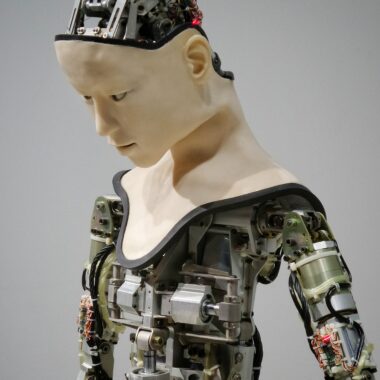| Posted in April 2007 |
| This article was published in a technology business magazine, April 2007 issue. |
|
Vincent Lombardi, the great American football coach, once said, “Winning is a habit.” Inventing, too, can be made into a habit. Thomas Edison, for example, filed hundreds of patents and during one phase of his life was filing a patent application every week.
|
|
Once a Zen master, showing a stone placed on a table, asked his disciples: “What do you see on the table?” The disciples replied that they saw a stone. But, one amongst them replied: “Master, I see a paper weight…” Inventors seem to have the ability to recognize dissimilarity in similarity, contrast in analogies, and novelty in familiarity.
|
|
Here is an inventive teaser. On a cold snowy evening, a woman in a bus-stop is clasping at her mobile phone with both hands. A bystander, curious at the way she is handling her phone, engages her into a small talk. Can you guess what he found? The mobile phone can also work as a hand-warmer.
|
|
In its early form, the cell-phone had the basic feature of making and receiving a call with the freedom of mobility. Later additional features like text messaging, voice-recording, image capturing, gaming, downloading music, and web browsing were introduced. However, the way one interacted with these devices was still through the keypads. The click-click and triple tapping interface was the only choice available.
|
|
Thanks to the inventive efforts of a few people, a new form of human-machine interface is introduced. In this technology, speech is made a seamless, dynamic part of the present state of human-machine interaction. It allows for the most appropriate mixture of spoken, visual and tactile interaction. There has been an ongoing effort to introduce multimodality into hand-held communication devices.
|
|
Imagine a person driving on the highway looking for a gasoline station for a fill-up. With the press of a button, she activates GPS on her cell-phone and asks for assistance. The GPS system then provides verbal directions to the nearest gas station. Or, imagine a person in a crowded place filling an online form using a PDA. In such a situation, a choice of spoken and keyed input with graphical output would be a great advantage. She can input all the non-sensitive information through speech and sensitive information such as passwords and security number through keys. Multimodality offers this flexibility to the user – a fluid interaction with the device, with a right blend of speech and other modes.
|
|
There are a few companies worldwide striving to offer multimodal technology as the next level of experience to users. One amongst them is Kirusa. This New Jersey based company is spearheaded by the far reaching visions of Dr. Inderpal Singh Mumick honored with the President’s gold medal. He completed his PhD. in Computer Science from Stanford.
|
|
The inventive streak in Dr. Mumick that started in his IIT days came to light, first when his query optimization technique was incorporated in IBM’s DB2 database. His ideas on materialized views, which were made a part of Oracle 8i database, made him a leading authority in this field. He has over 40 technical papers, 18 issued patents and several pending patent applications to his credit.
|
|
Dr. Mumick’s constant urge to seek new challenges and avenues to implement his ideas turned him into a serial entrepreneur. He went on to found Kirusa in 2001. Having pioneered the development of VoiceSMS service, Kirusa strives to bring the freedom of multimodality to present day mobile users. Kirusa is developing multimodal platforms and IMS (IP Multimedia Subsystem) services in an effort to standardize multimodality and offer solutions for simple deployment.
|
|
Alan Kay, the inventor of object-oriented programming, once said, “The best way to predict the future is to invent it.” Inventors, perhaps, breathe this mantra and create an air of innovativeness for the rest of the world to thrive on.
|




